Shearing Sheep
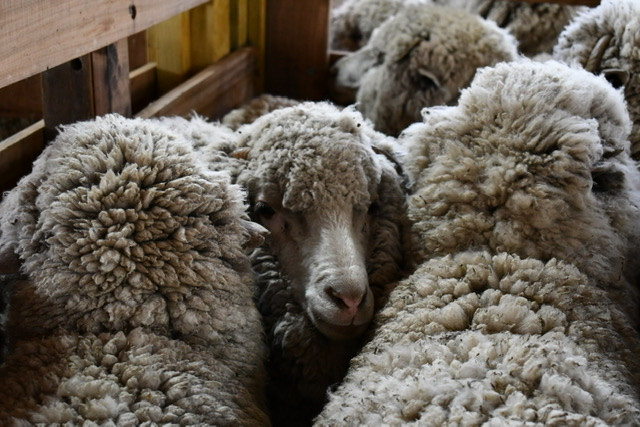
Estancia Tecka was founded in 1910 by a British concern. Two Argentine families have owned and managed it’s 425,000+ acres since 1960, mainly to raise sheep, of which they currently have 85,000. In recent years the family has run the Estancia also as a flyfishing property. The Estancia has 91 miles of private fishing water within its confines.
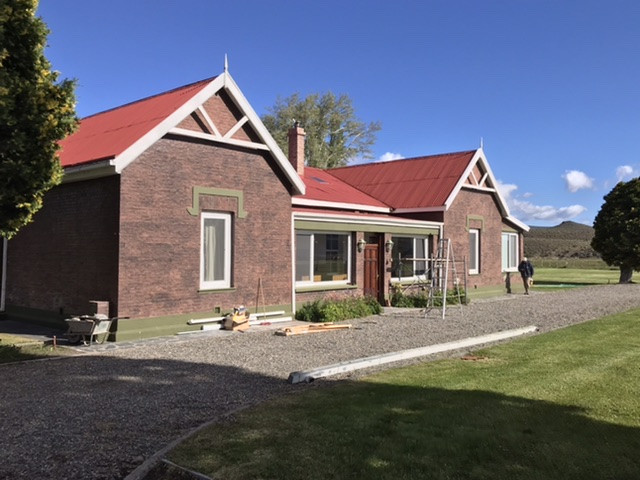
We stopped by on our way to Coyhaique, Chile, which is only a few hours drive from here. Months ago, when we were asked by Orvis Travel to host a special week at Estancia Tecka, we had asked Pedro, one of the owners, if we could stop by on our way south. We wanted to make sure we knew how to get here in February, when travel time would be tight.
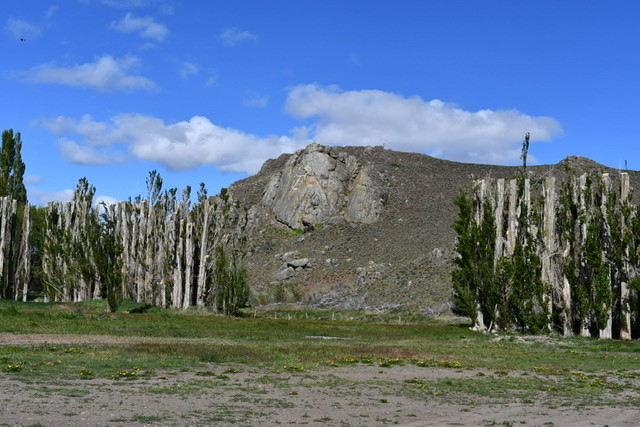
The estancia is like a small city, deep within its own borders on the Patagonian plain. We were shown both of the lodges operated by the Estancia. Their headquarters Lodge, which dates to the 1920s was yet to be opened in the early season. We were shown a room in an adjoining building and we’re immediately invited to be shown their second Lodge, Caridad. I made the mistake and assumption that we were walking to Caridad and did not bring my camera. We were put into a truck and were driven 30 minutes to a location even deeper into the Estancia, to find a neat, recently renovated lodge on the Rio Corcovado, next to the Chilean border and staring at the Andes.
On the drive-in to Caridad we were told to watch for wildlife. Lynnette, who had strained her neck looking out the truck window all day to see Rheas and Guanacos in the distance, saw a couple dozen of each, some running across the road, in the drive across the Estancia.
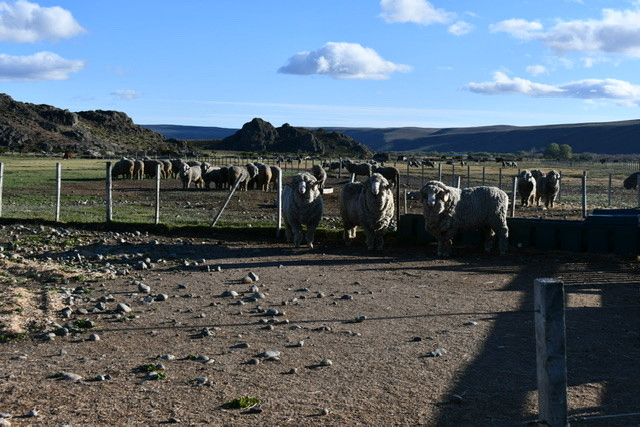
The historical estancia is presently surrounded by sheep, as it is time to shear their coats after the long winter and bring the wool to market.
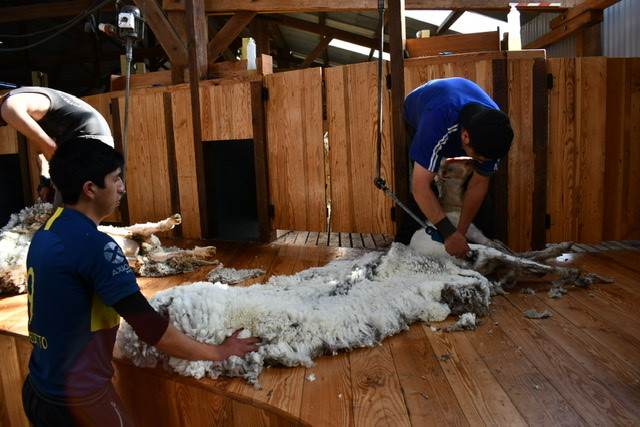
We were invited to observe the process in the shearing building, where six men expertly shorn the coat of wool from the sheep. It was a fascinating process to observe. Certain parts of the Sheep's coat are taken as they are removed and sorted for various grades of coarseness length, oil or, as in the case of the belly, seeds and other impurities.
It’s a very organized process. Two-year-old Rams, which have the grade-A wool, are herded into pens and slowly moved forward into the building.
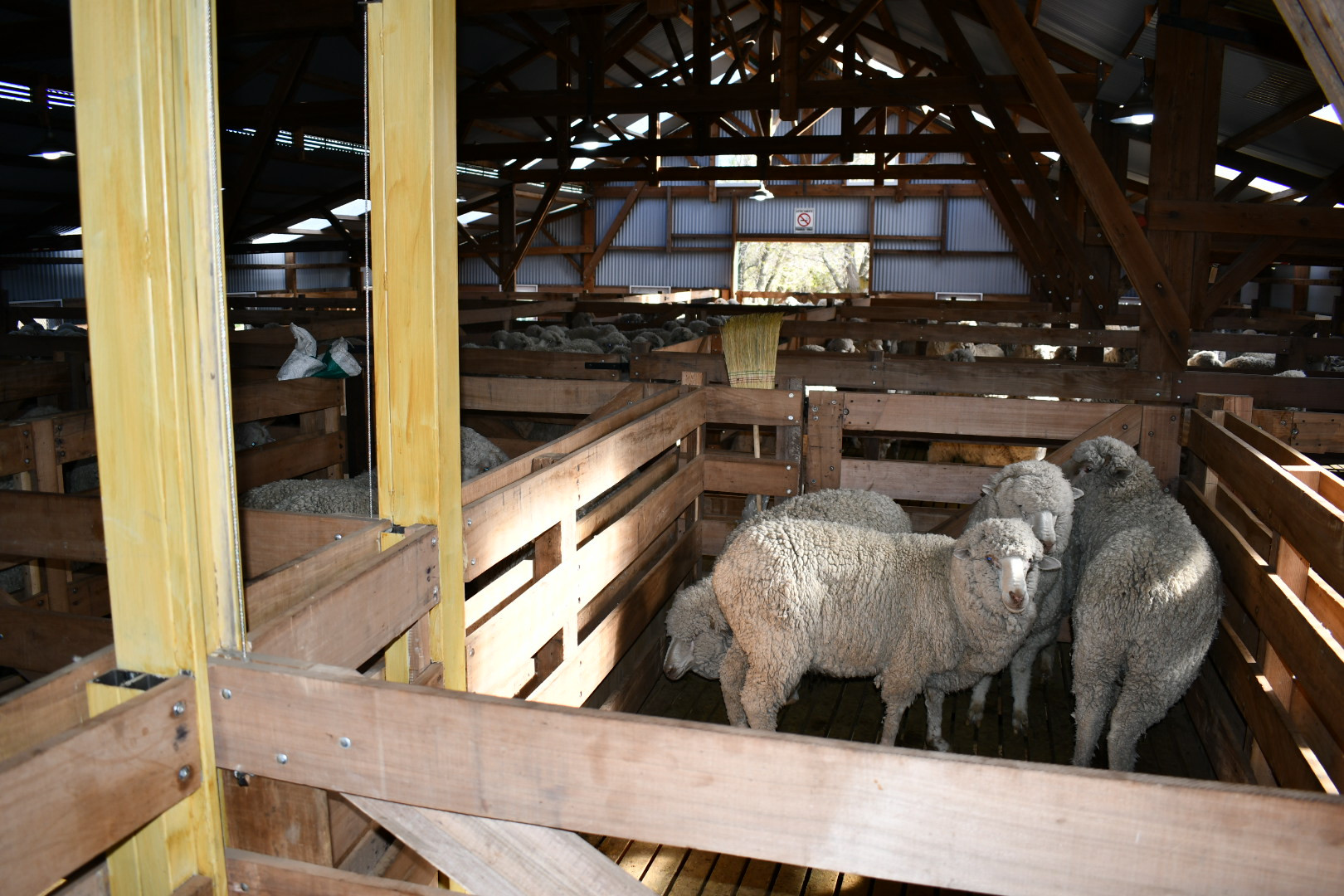
Individual shearors grab each sheep, which are remarkably docile, and hold onto them as they cut their coat off in a pre-established pattern.
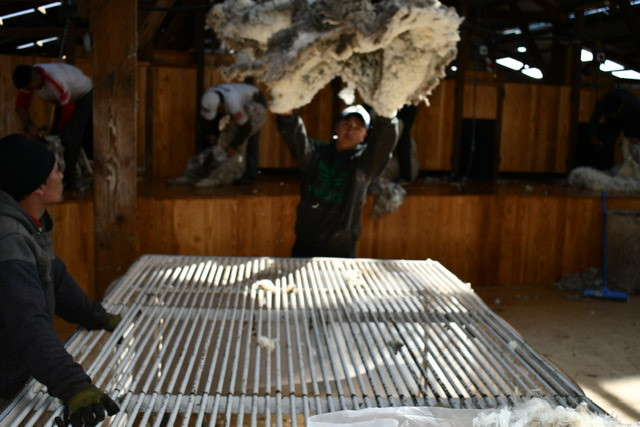
Attendats grab special sections of the cut and immediately sort them. Another attendant will grab the entire, massive coat of shorn wool and cast it upon a flat table where there are even more attendants to pick off and sort select pieces.
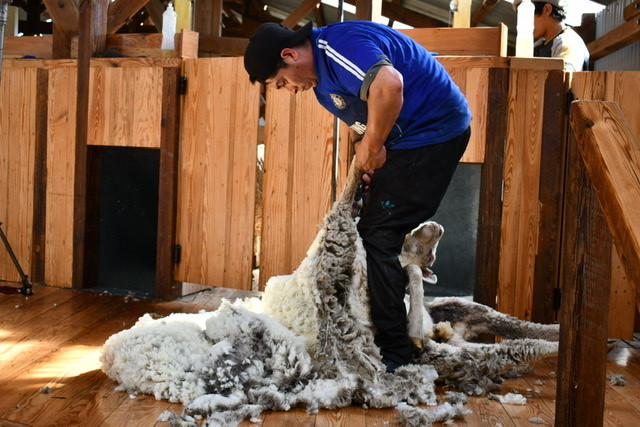
Assorted wool is then pressed into gigantic 350 kg bales, marked with grade and a certified organic sticker, which our host explained was very important, and then placed in a warehouse prior to shipping,
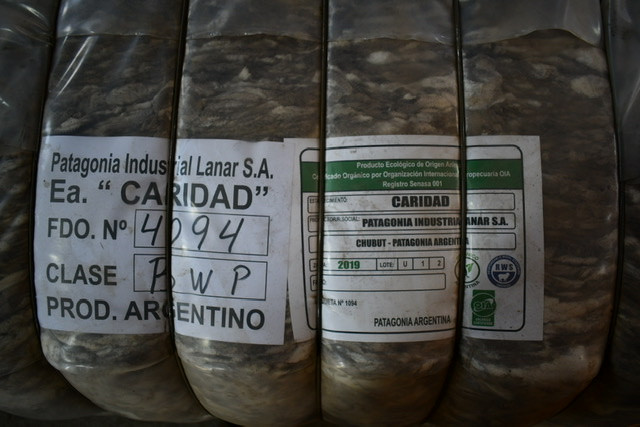
We were told the bales will fit exactly 72 to a standard shipping container.
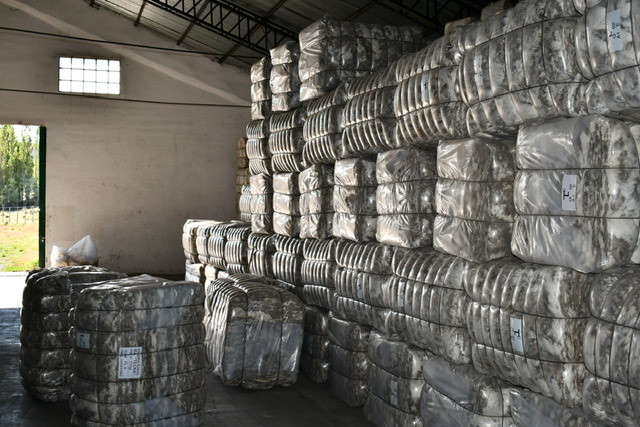
The wool will then make its way to China, Latvia, Vietnam and many other markets around the world.
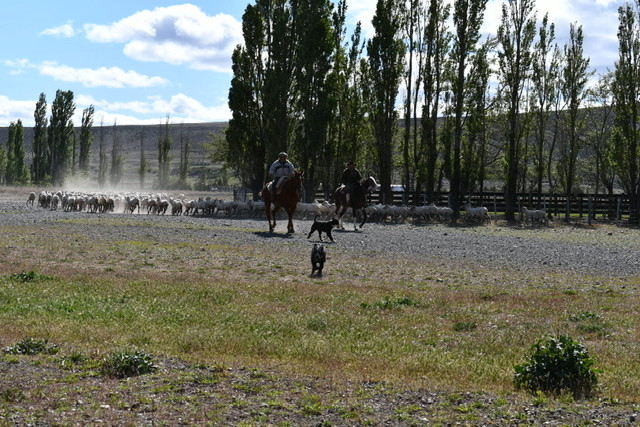
The shorn sheep are then turned out to pasture by the gauchos and their dogs, who hurry them on their way, nipping at their heels.

